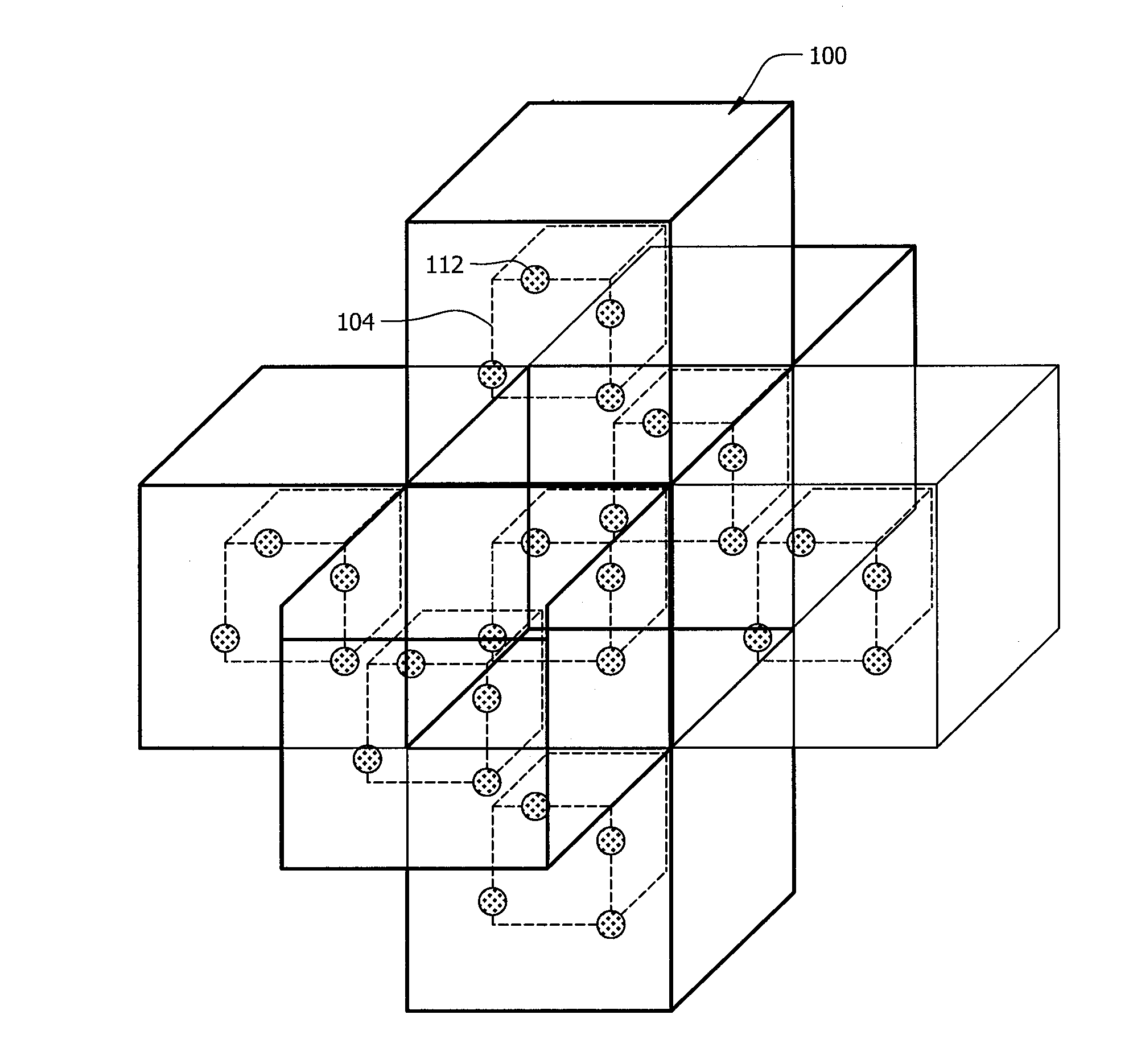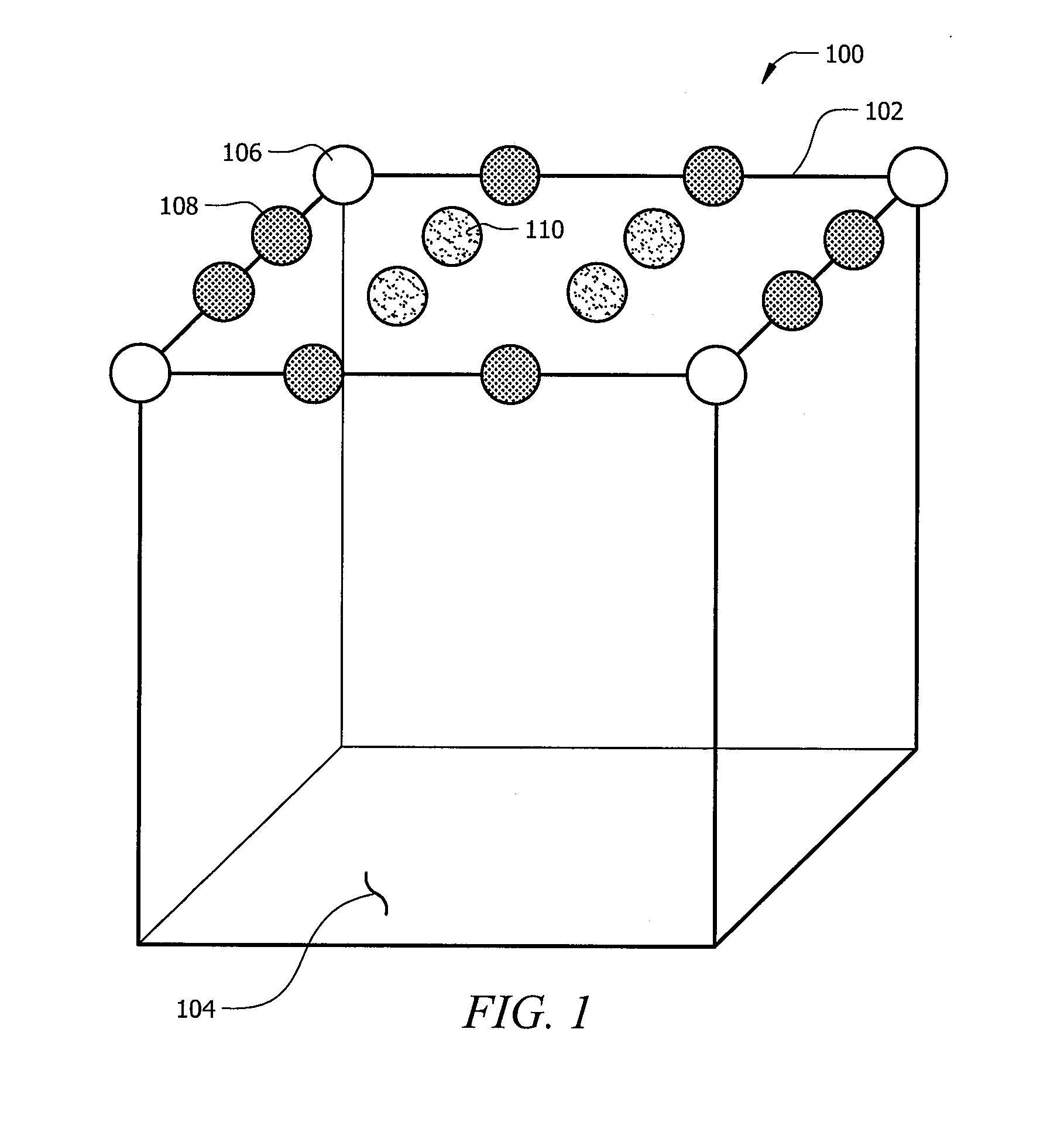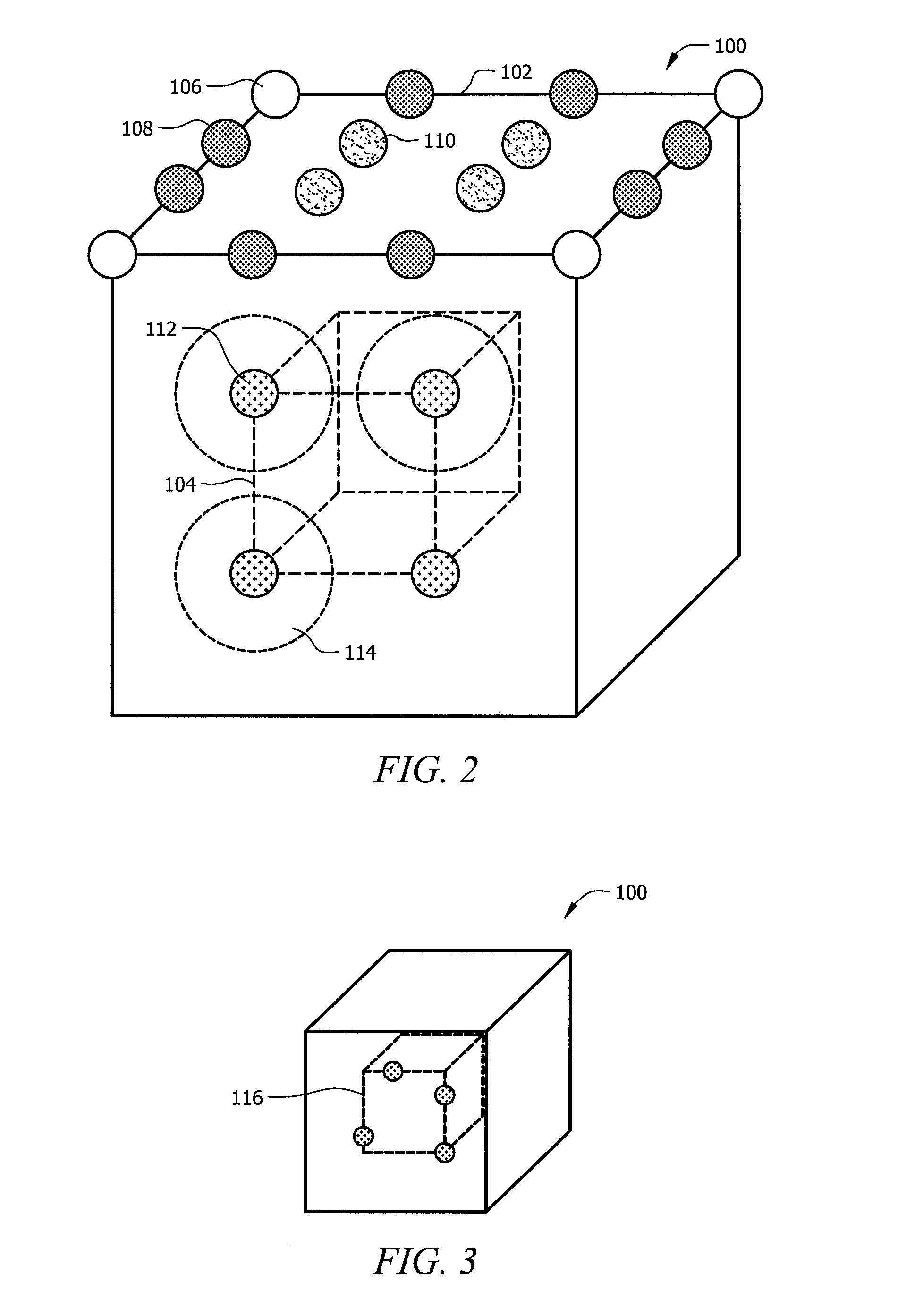Controlled randomized porous structures and methods for making same
a porous structure, controlled technology, applied in the field of porous structures, can solve the problems of consuming large amounts of energy in conventional metal foam fabrication processes, unable to provide the desired strength to serve as weight bearing structures in many medical implants, and forming undesirable metal compounds in metal foams, etc., to achieve the effect of improving strength
- Summary
- Abstract
- Description
- Claims
- Application Information
AI Technical Summary
Benefits of technology
Problems solved by technology
Method used
Image
Examples
Embodiment Construction
[0070]The present disclosure provides for methods to fabricate porous structures with improved strength, porosity, and connectivity. Preferably, the improved porous structures of the present invention is formed by using a free-from fabrication method, including rapid manufacturing techniques (RMT) such as direct metal fabrication (DMF). Typically in RMT or free-form fabrication, a model, or calculations defining the desired structure, or a computer readable file of the desired structure is provided to a computer-aided machine or apparatus that has an energy source such as a laser beam to melt or sinter powder to build the structure one layer at a time according to the provided model.
[0071]For example, RMT is an additive fabrication technique for manufacturing objects by sequential delivering energy and / or material to specified points in space to produce that part. Particularly, the objects can be produced in a layer-wise fashion from laser-fusible powders that are dispensed one laye...
PUM
| Property | Measurement | Unit |
|---|---|---|
| porosities | aaaaa | aaaaa |
| porosities | aaaaa | aaaaa |
| threshold angle | aaaaa | aaaaa |
Abstract
Description
Claims
Application Information
 Login to View More
Login to View More - R&D
- Intellectual Property
- Life Sciences
- Materials
- Tech Scout
- Unparalleled Data Quality
- Higher Quality Content
- 60% Fewer Hallucinations
Browse by: Latest US Patents, China's latest patents, Technical Efficacy Thesaurus, Application Domain, Technology Topic, Popular Technical Reports.
© 2025 PatSnap. All rights reserved.Legal|Privacy policy|Modern Slavery Act Transparency Statement|Sitemap|About US| Contact US: help@patsnap.com



